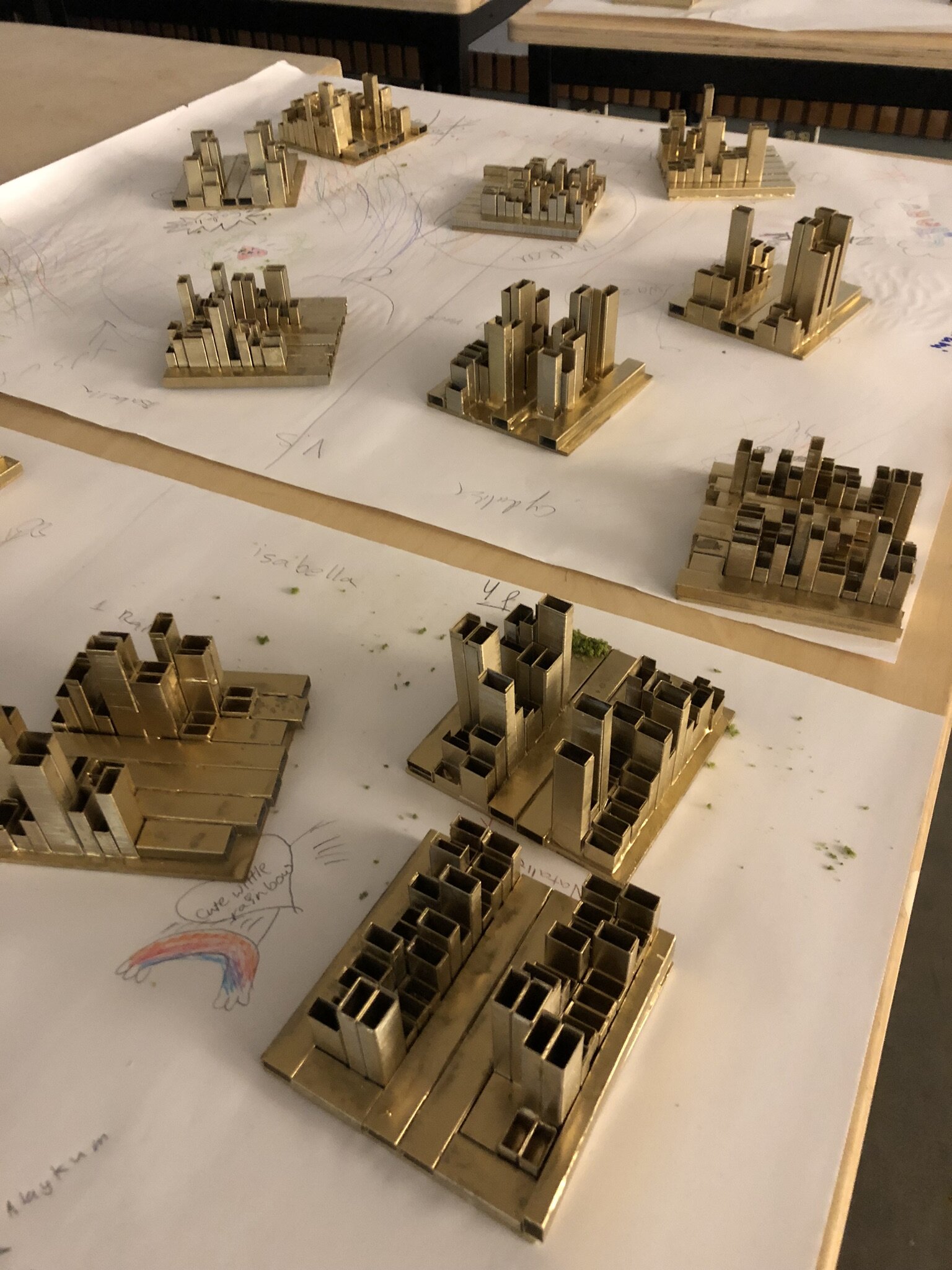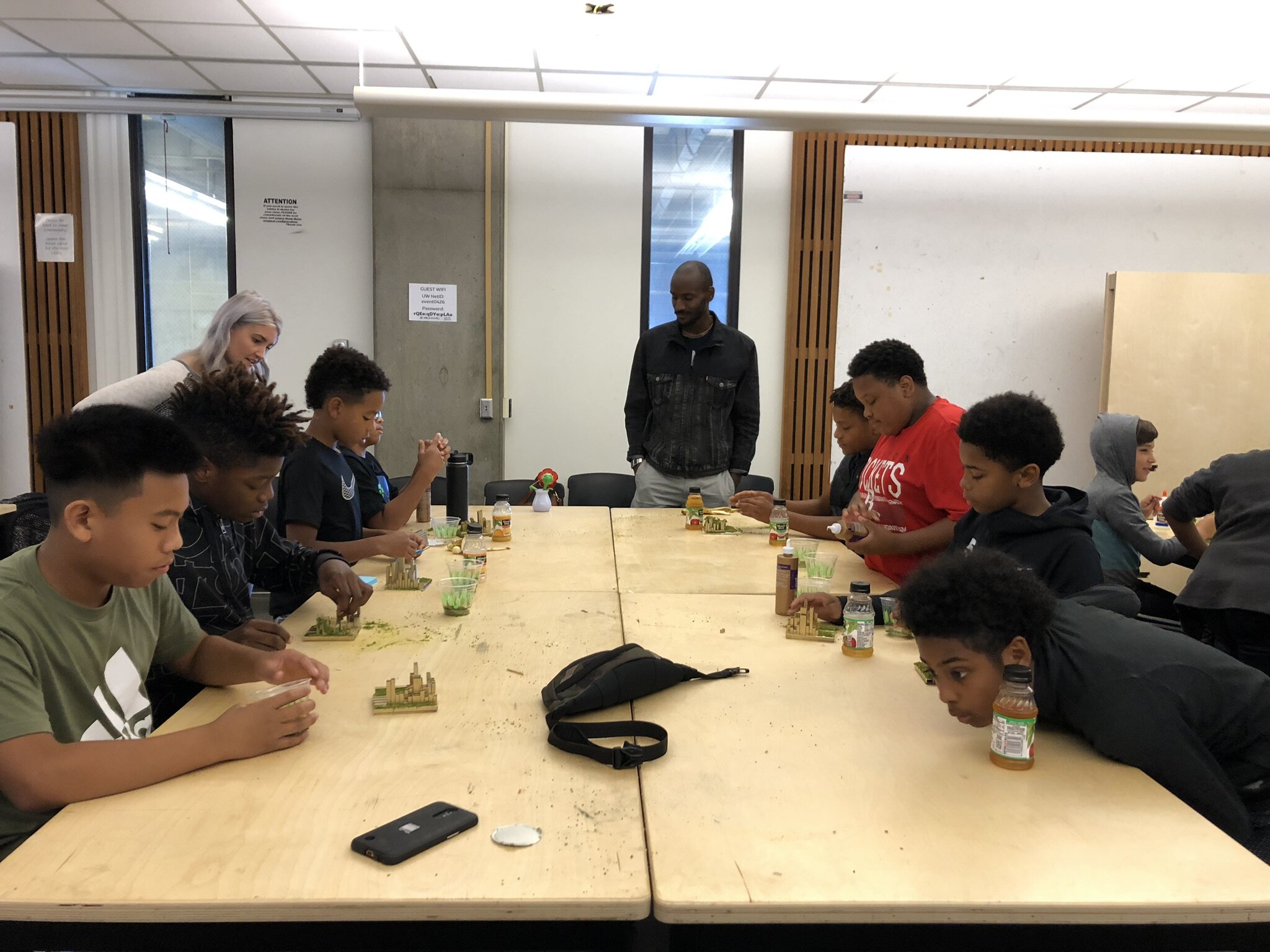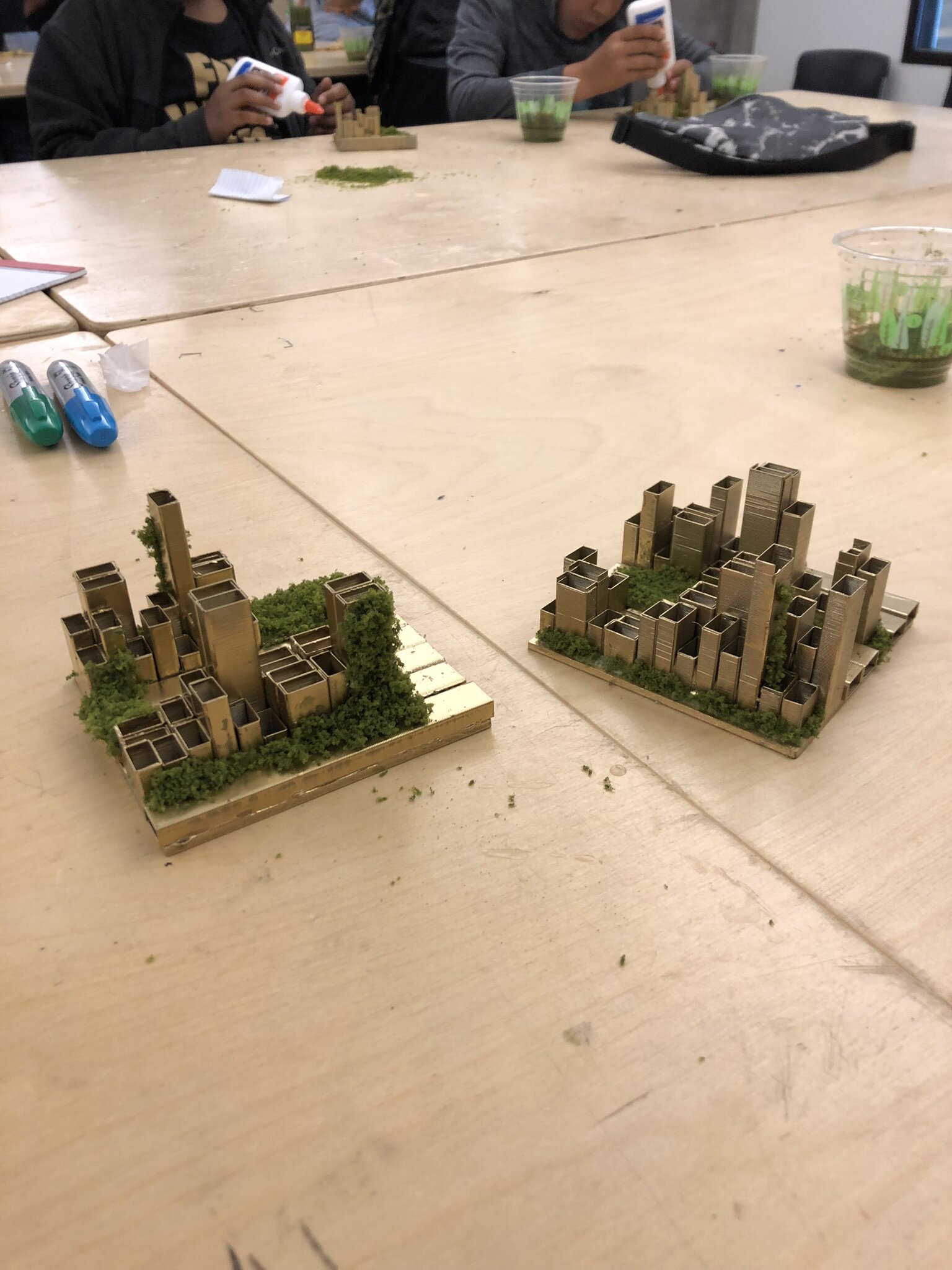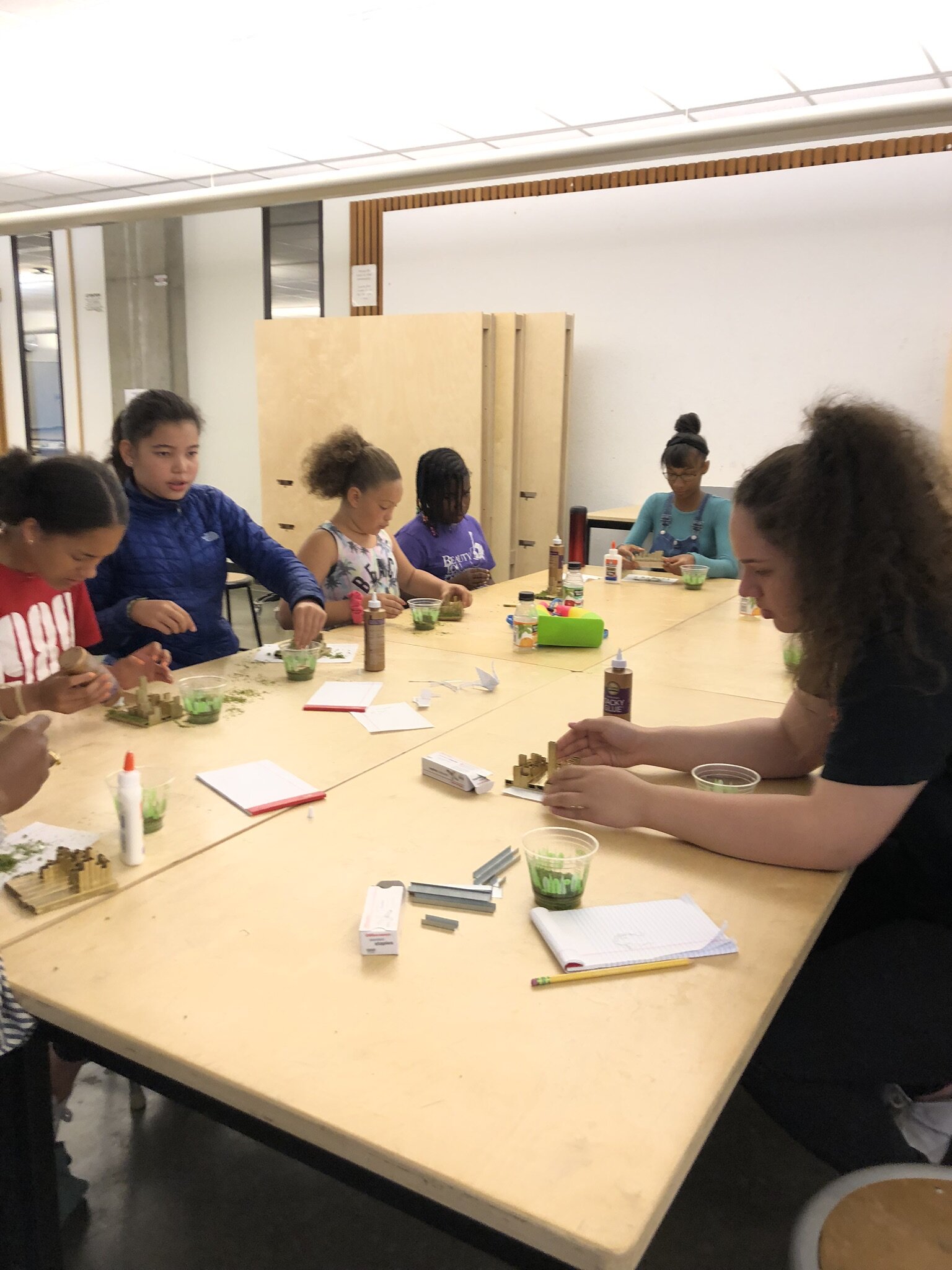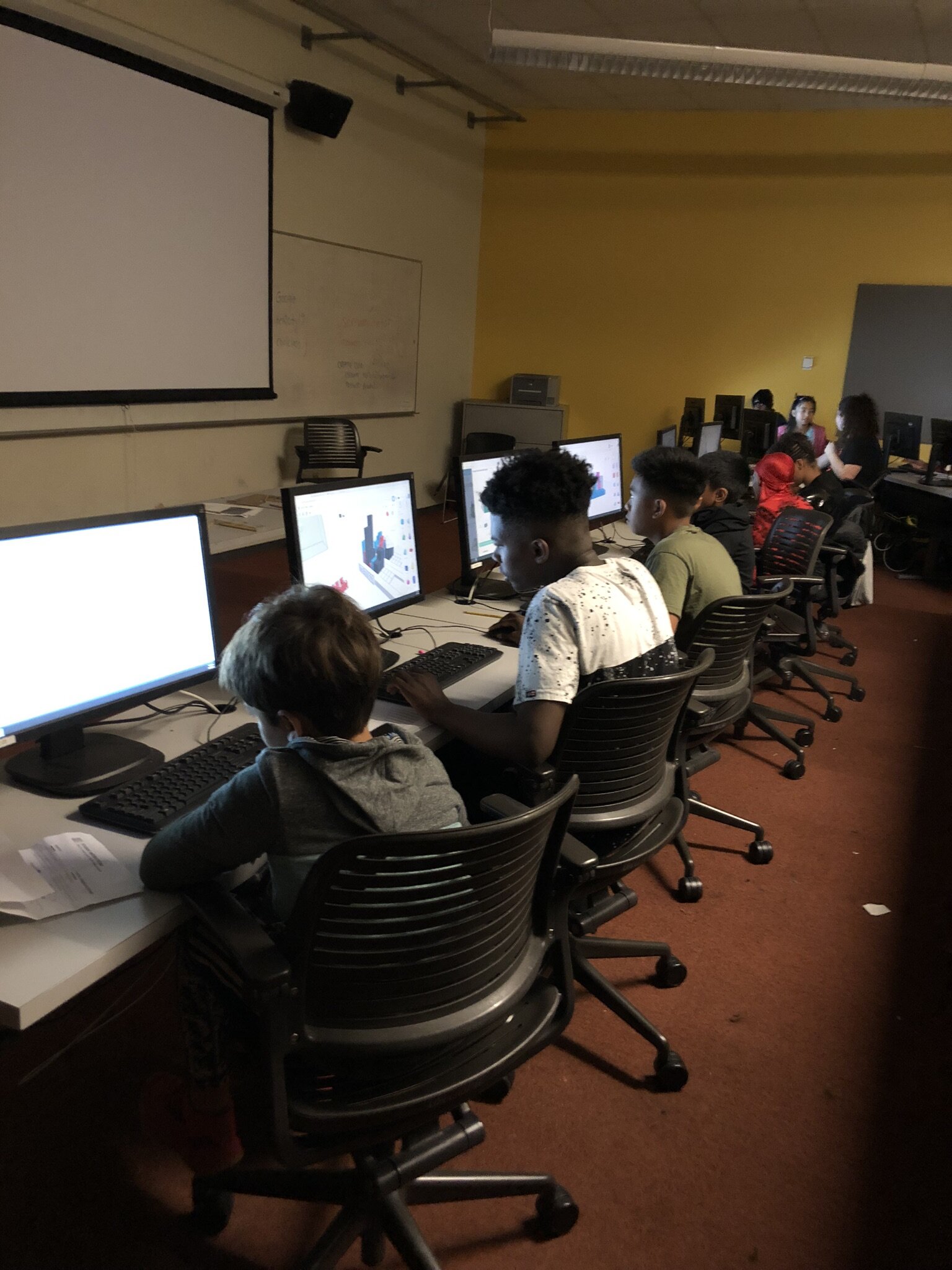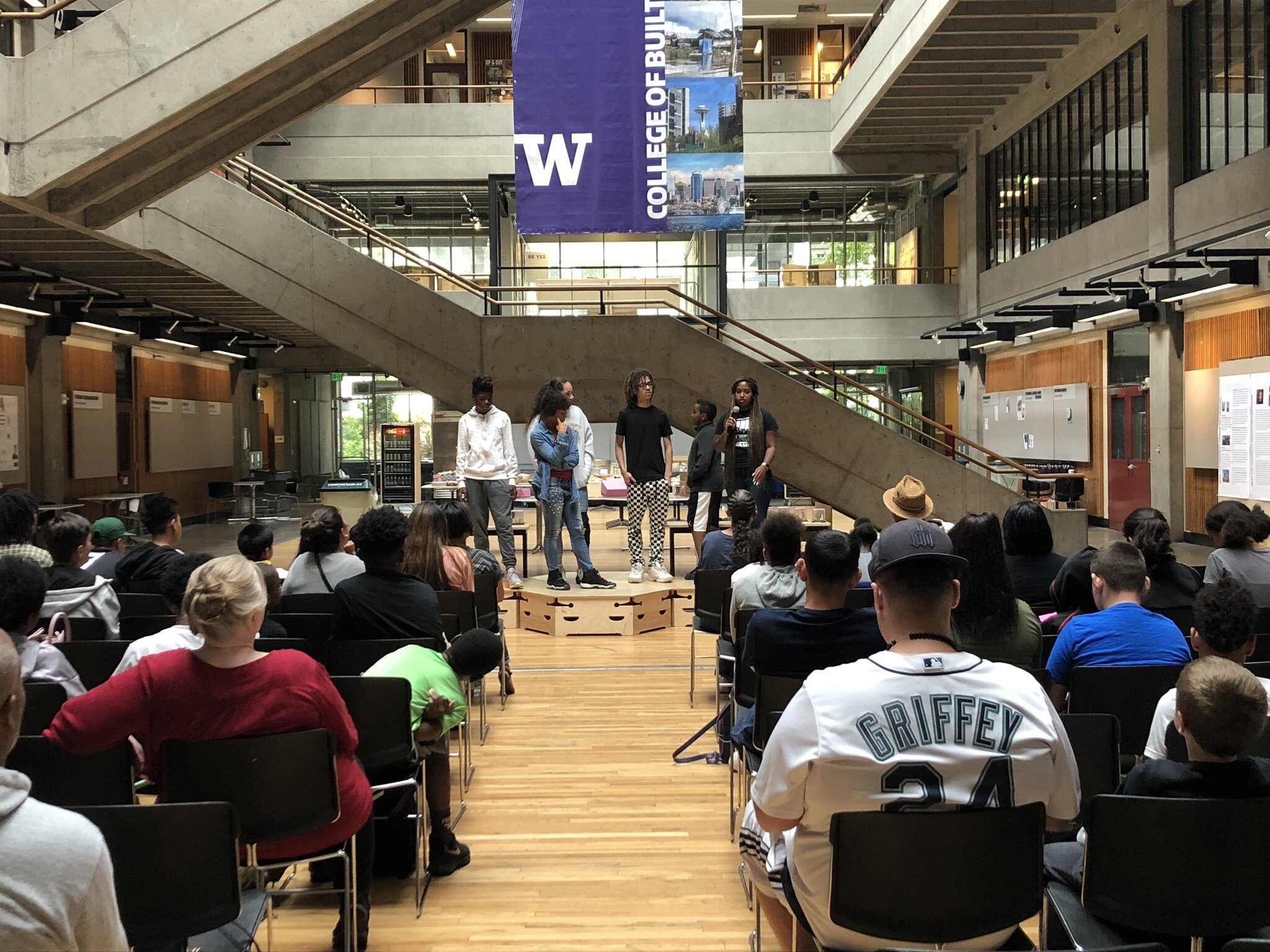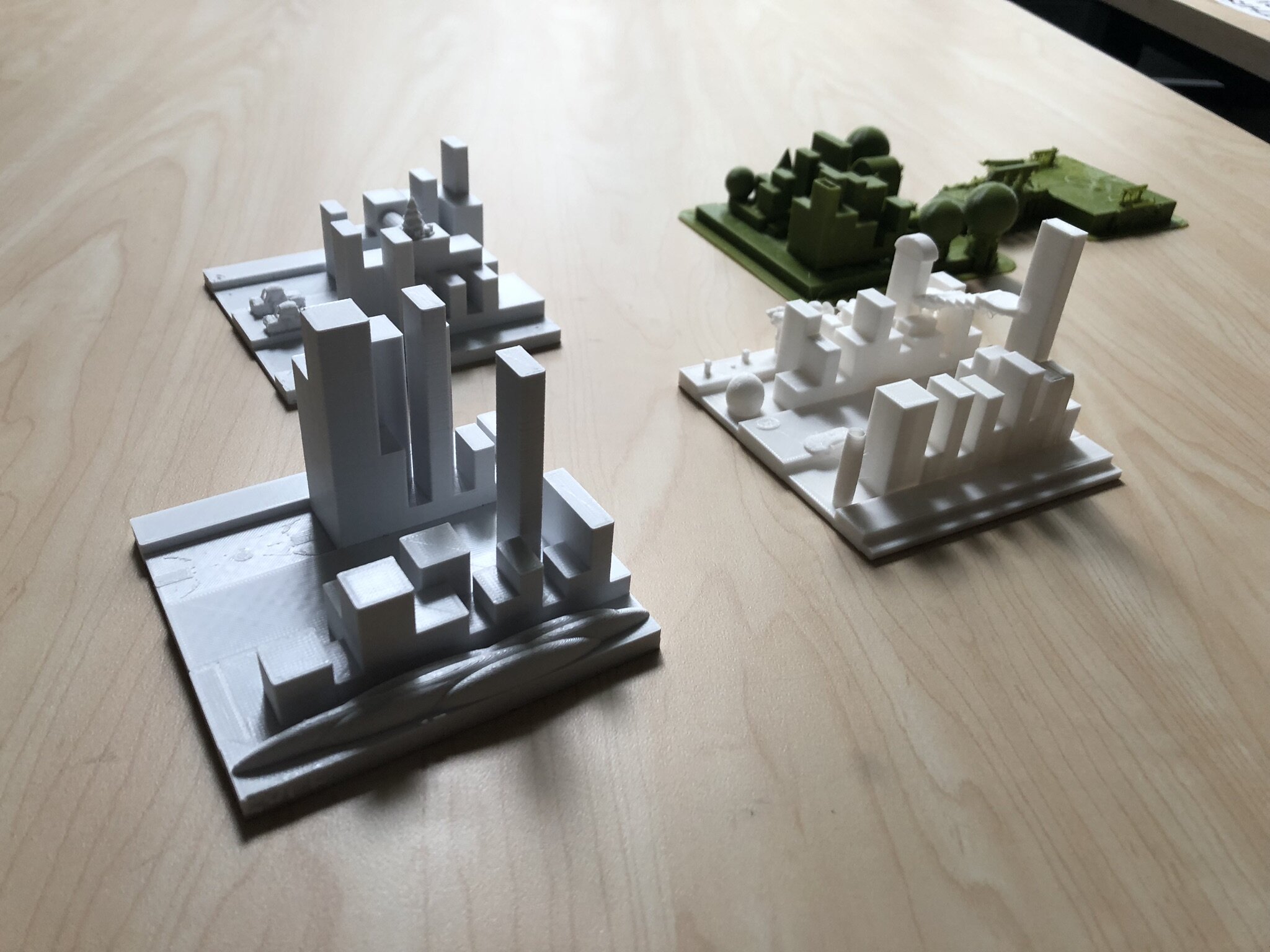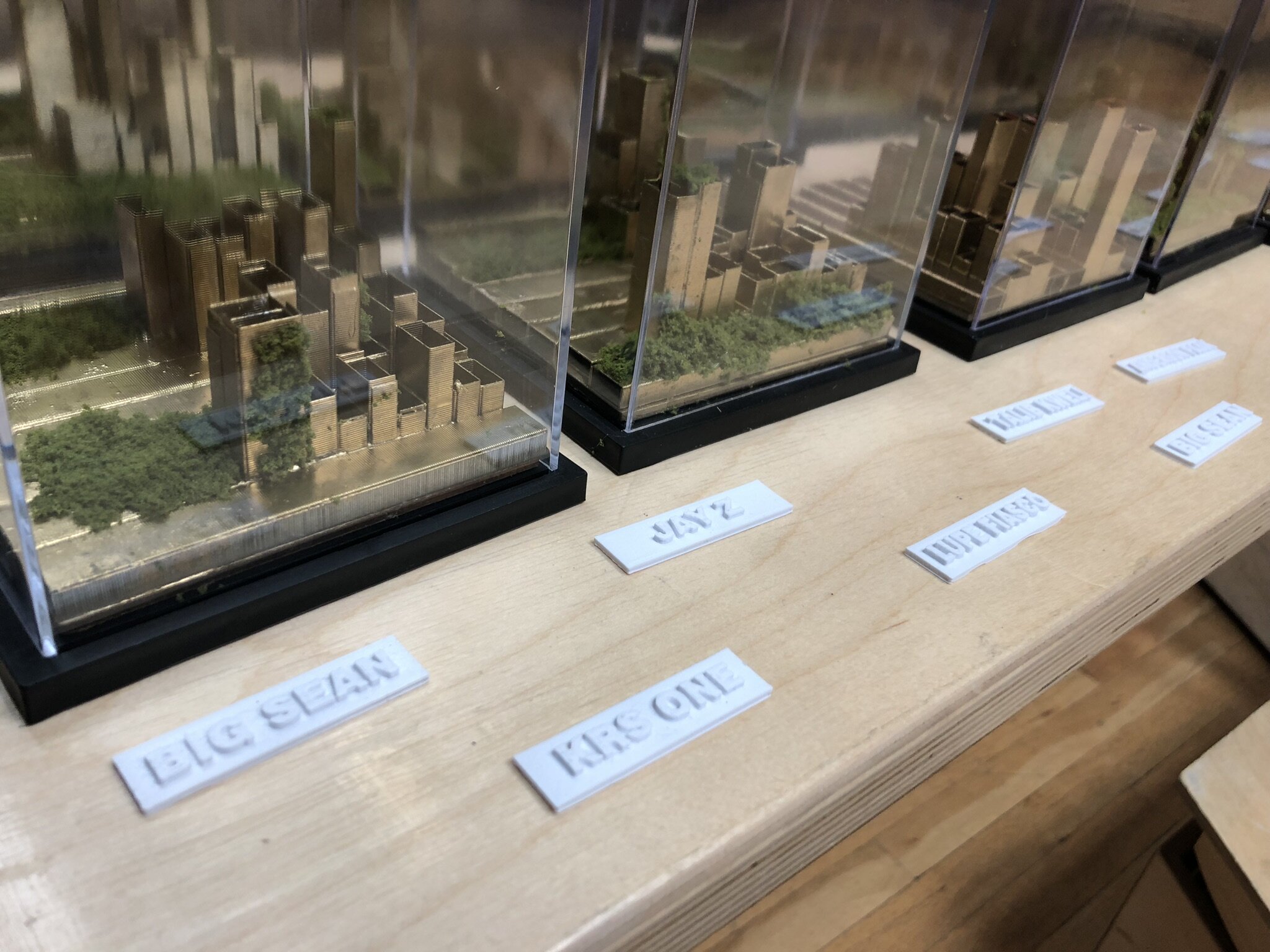Business & Practice
Geoff Anderson Nationally Certified as Associate Design-Build Professional
Schemata principal Geoff Anderson has successfully completed the Design-Build Institute of America’s comprehensive education, training, and certification testing program to achieve the designation as a nationally certified Associate Design-Build Professional.
DBIA Certification is the nation’s only measurable standard of an individual’s knowledge of the Design-Build Done Right principles, which are vital to successful project delivery.
I have a long and successful history of working on Design-Build projects. These range from multi million-dollar community recreation projects, to over 500 housing units in Alaska, to smaller scale projects. All of these were completed well before I even considered getting DBIA Certification, but were built using the key touchstone of Design-Build: collaboration. I suppose I was lucky to be a part of these great teams and successful projects even early in my career, and they continue to shape my approach to my work. Going through the certification workshop and materials, it has been fascinating to think back on these personal experiences and compare them to DBIA’s Best Practices.
The key to a Design-Build project is that the owner holds a single contract with the design and contractor team. The General Contractor, Architect, and Engineers are integrated as a single entity that relies on collaboration and trust for success. There are many benefits to this contracting method. Owners might choose it for the accelerated schedule and innovative design solutions, especially if they are flexible on the specific details and approach. As a best practice, it is recommended that the owner picks a team based on qualifications rather than price. This best value approach considers both quantitative (price) and qualitative (technical) aspects of a Design-Build team’s proposal.
Family Housing Replacement - Siku Basin | Fort Wainwright, AK - photo courtesy of Ken Graham Photography / Osborne Construction Co
As I reflect back on my own experiences, as well as my certification process, I have gathered a few guiding thoughts that I will take with me into future Design-Build projects:
Clearly Define the Performance Requirements. This is possibly the most challenging but important part of any Design-Build project. These lay out the expectations for the project and should be objective and measurable. I worked on one project where this could have been improved upon: A Progressive Design-Build, where two teams competed beyond the qualifications-based selection phase to prepare a schematic design that met the stated performance requirements. In the end, our team felt like we were able to creatively deliver the on the objectives and stay within budget, although we strayed from one wish list item -- to have a second floor. Although this was not explicitly identified as a Performance Requirement, it worked against us. The project was eventually built by the other team, but we felt justified by the fact that our team was truthful, effective, and adherent to the Performance Requirement.
Creativity and Innovation are Essential. These have been key to the overall success of each of my Design-Build projects. For the housing projects in Alaska, the owner (the Department of Defense) was very prescriptive about many of the project requirements. This prescriptiveness is counter to the creativity that is central to DBIA’s Best Practices. Regardless, our team was able to develop plans and details that allowed us to panelize nearly all the framing for the homes, including the stair elements. This resulted in construction being able to advance year-round in the shop, despite the climate-shortened window when crews were able to work on site. At the peak of production on site, crews were able to fully assemble and “dry-in” six homes per week.
Family Housing Replacement - Denali Village | Fort Wainwright, AK - photo courtesy of Osborne Construction Co
Designing to Price is the Key to Success. In Design-Build, the price is set early in the process, and the Design-Build team needs to design and hold to that price. This means having a team build on close collaboration and trust is essential. For a small community pool project in remote central Washington, the Design-Build teams were asked to tell the city what they could get for their budget. As the team which promised the most, we won the job. We delivered on our proposal by joining forces with a prefabricated pool manufacturer, minimizing the need for specialty trades to travel and work on the rural project site. We were also able to work directly with the manufacturer to ensure our design and technical details were correct through the shop drawings process.
Othello Community Pool | Othello, WA - photo courtesy of: Aquatics International
These lessons learned have been important in my development as an architect, and I look forward to future Design-Build opportunities to apply them along with the knowledge I have gained from my DBIA Best Practices education. I am now proud to be an officially certified Associate Design-Build Professional®.
Grace Kim Elevated to American Institute of Architects College of Fellows
Schemata Workshop Founder and Principal Grace Kim has been elevated to the American Institute of Architects College of Fellows, in recognition of her national and international leadership in the profession.
AIA Fellows are recognized with the AIA’s highest membership honor for their exceptional and significant work and contributions to architecture and society. Only 3 percent of AIA members have this distinction.
From her work in the Cohousing movement, to her novel approaches to mentorship, to her tireless efforts both advocating for and designing equitable affordable housing, Grace has displayed a consistent dedication to inclusion through her over twenty five years of practice. Grace’s approach has international reach – inspiring and influencing practitioners, educators, and students alike. The following are excerpts from her application, outlining the three facets of Grace’s leadership.
Advocating for Change from Within the Profession
Grace has framed her professional approach to architecture with inclusion as the core principle. Grace has advocated for underrepresented voices within our profession – whether they be emerging professionals, women, or people of color. She has worked diligently to combat embedded inequities in the practice of architecture by creating an inclusive, mentorship-based model of practice.
For over two decades, Grace has been a vocal advocate for emerging professionals. Her wide-reaching work, from her internationally distributed book, The Survival Guide for Architectural Internship and Career Development, to her development of the innovative Laddership and Speed Mentoring models, has garnered her national recognition and the 2004 AIA Emerging Professionals Mentorship and 2008 Young Architects Awards. Her professional contributions in cohousing, participatory design, and social equity have resulted in Grace being a highly sought-after speaker for national and international conferences and symposia. Her TED Talk on cohousing has reached over 2.4 million viewers worldwide.
Building Bridges between Education and Practice
Creating a more inclusive and equitable architectural profession begins with access. Grace has dedicated herself to removing barriers to entry and providing a path to leadership for women and BIPOC students, beginning in the classroom. By engaging students and youth around the country and the world, Grace provides a model of female minority leadership that makes achievement more tangible.
Women and people of color continue to be underrepresented in architecture, particularly in leadership positions. In 2019, NCARB reported women and minorities respectively comprised 38% and 20% of those finishing core licensure requirements. Grace has experienced this inequity firsthand, and has worked as a critical agent of change. From speaking regularly at regional and national AIAS conferences, to jurying design studios, to providing lectures, tours, and workshops for the Seattle Architecture Foundation (SAF), Grace has built a pipeline for future generations of diverse architects. Grace has inspired and provided a pedagogical influence internationally with courses and studios on cohousing and user-centric design.
Amplifying Underrepresented Voices in the Community
Grace is invested in fostering inclusion in her community as an extension of her service-oriented practice. In Grace’s leadership and advocacy for community-based initiatives, from affordable housing, to anti-displacement efforts, to collective ownership models, she demonstrates an attentiveness to the needs of diverse people, providing them amplification and empowerment.
Over years of service on the Housing Development Consortium Board and as a Seattle Planning Commissioner, Grace has combatted racial disparities, restructured Board recruitment processes, and implemented an equity-based lens for developing planning and policy documents. In industry-wide planning and land-use policy discussions, Grace has been a constant advocate for climate justice and the rights of renters, low income families, and people experiencing homelessness or displacement. Grace has also contributed to the community significantly through her leadership in the global cohousing movement — a collaborative housing model that encourages user-participation through the design and development process.
For more information on the other newly-honored Seattle-based AIA Fellows, click here.
For a full list of the 2021 AIA College of Fellows recipients, click here.
A Very Early Season's Greetings From the Workshop!
The turkey may not even be on the table, but we at the Workshop are already in a holiday state of mind. Also, with our 15th Anniversary coming up, we have been feeling especially grateful lately. Thinking back on the past decade and a half, and have been feeling thankful for all of the support, collaborations, and recognition we have received — which has helped make our job all the more joyous!
If you received our Holiday Card this year, you know it includes an adorable little holiday frogger to make for yourself. If you didn’t receive the card, don’t feel left out of the fun! You can access the template for the little guy here.
To make, simply print the file double-sided, cut, fold, and hop away!
Don’t forget to post a photo of your frogger’s adventures on social media using the hashtag #Frogger15
Our favorite photos will be reposted on our social media, and the grand prize winner will get a piece of Schemata swag!
Design that Moves You: Hip Hop Architecture Camp
“Representation matters”
In partnership with the University of Washington, NOMA NW (National Organization of Minority Architects), and NAIOP (the Commercial Real Estate Development Association), AIA Seattle’s Diversity Roundtable Committee helped execute the first ever Seattle-based Hip Hop Architecture Camp. The camp uses curriculum developed by Detroit-based designer Michael Ford to introduce minority youth to architecture through the lens of hip hop culture.
Seattle’s camp was hosted at UW’s campus, and had 43 students enrolled from over 20 different schools around the area. Students spent five days learning about architecture, urban planning and design from UW students and practitioners of color so that they could directly realize the power of representation in each of these fields. They created physical models of cityscapes based on rap lyrics, learned how to adapt and 3D print their designs with digital modeling software, and created their own rap lyrics about their hopes, dreams, and observations of Seattle’s built environment. The camp ended with the production of a music video, showcasing the students, their lyrics, and buildings in the area. - MK
Margaret Knight, Architect
Through volunteering with the Diversity Roundtable over the past four years, I have been involved in several youth outreach events focused on diversifying Seattle’s pipeline of design professionals. Each engagement opportunity is an exciting chance to connect with students and hopefully spark an interest in the field. My own interest in architecture started because of a fourth-grade field trip to a school of Architecture, Art and Planning, so I strongly believe that exposure is a key first step to opening the door for so many.
Being a part of the Hip Hop Architecture Camp was a particularly rewarding process because of the months of planning that preceded it. To finally have all the kids there and see them shine was incredible. They were all so talented and seeing their skills and confidence grow throughout the week was amazing. The camp also created such a sense of camaraderie between them, with students coming from so many different places, it was great to witness new friendships form in the span of days. The support they showed for each other’s work was also unbelievable to see, and made me even more excited to be a part of the camp next summer. - MK
Joann Ware, Architect
As a youth, I was interested in architecture but only knew of 5 architects: Frank Lloyd Wright, Michael Graves, the Brady Bunch’s dad, Maya Lin, and Filippo Brunelleschi. One of the five looked like me, and even that minimal presence reassured me that I could become an architect. Representation matters. This is why I volunteer with the AIA Diversity Roundtable’s Architects in Schools program and the recent Hip Hop Architecture Camp in Seattle.
Before the camp, I wondered how hip hop music and architecture could be combined into one curriculum. They have both been significant influences in my life, but very separate. Through the volunteer training and participation in leading the camp, I developed a new perspective of both art forms. Listen closely -- beyond infectious dance beats, hip hop lyrics reference significant places, the built environment’s use by urban youth, and social injustices perpetuated by failures in city planning. Like a 3D model or sketch, rap lyrics can also create a future vision for the built environment.
Michael Ford’s Hip Hop Architecture Camp is intentional about empowering youth of color to shape their communities. It provides tangible tools for communicating about the built environment – physical models, digital models, music. The camp participants inspired me with their creativity, confidence and innovative approaches to design challenges. The youth shone when sharing their cityscape models and song at the end-of-camp ceremony, and I can’t wait to see the final music video. I am hopeful they will become the architect, planner, designer, musician, and policy-maker role models for the next generation. - JW
